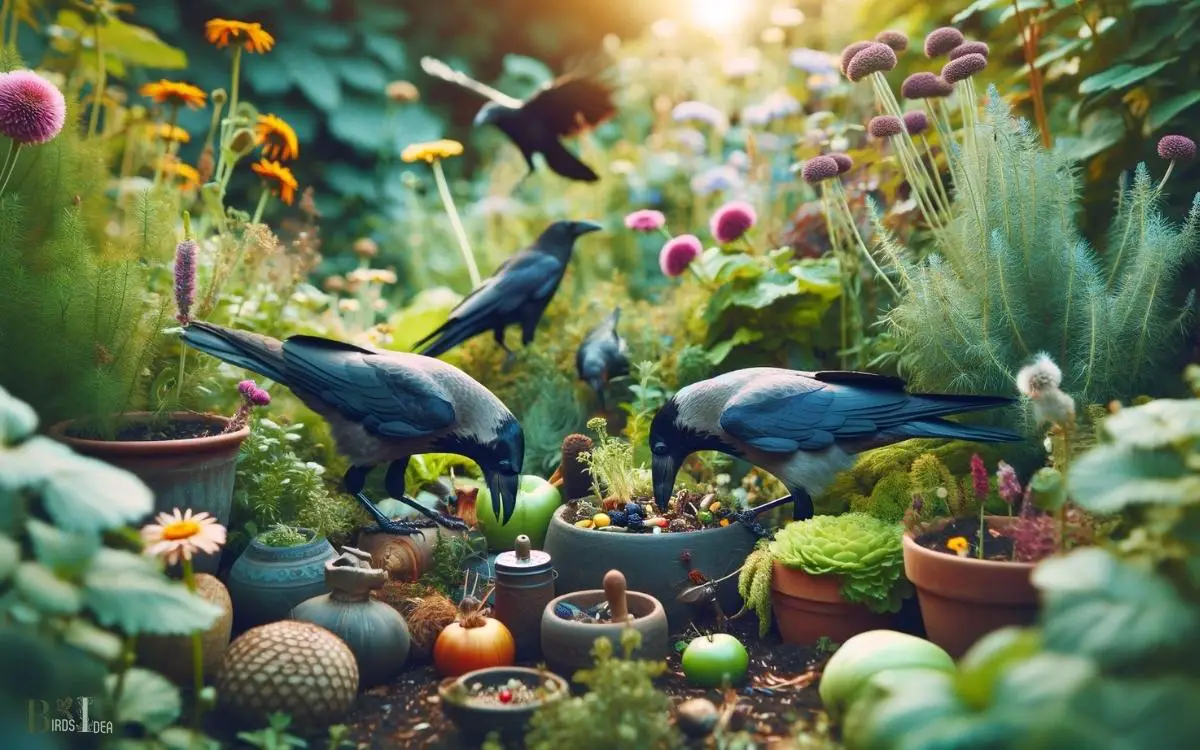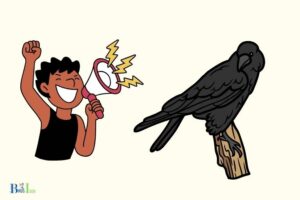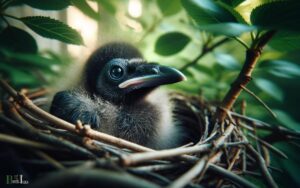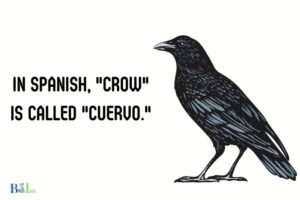What Do Crows Eat in the Garden? Insects, Fruits & Nuts!
Crows are omnivorous birds and their diet in the garden includes a wide variety of foods. They eat insects such as beetles and worms, small animals like frogs and mice, seeds, grains, nuts, fruits, and even human food waste.
Crows are opportunistic feeders and will take advantage of whatever food sources are available.
Crows have a highly adaptable diet that changes with availability and season:
For example, during the spring and summer, crows may focus on protein-rich insects to feed their young, while in the autumn, they might switch to grains and fruits that are abundant in gardens.
As intelligent foragers, crows play a complex role in the ecosystem, often acting as both pest controllers and plant propagators within garden environments.

Key Takeaway
Insects and Bugs
Crows feed on a variety of insects and bugs found in garden environments, playing a crucial role in pest control.
These omnivorous birds have a diverse diet that includes grasshoppers, beetles, caterpillars, and other common garden pests.
They are particularly adept at foraging for insects in the soil, leaf litter, and among plants. Crows use their sharp beaks to probe the ground and overturn debris in search of hidden insects.
Their keen eyesight and intelligence also enable them to locate and capture insects with precision.
By consuming a significant amount of these pests, crows contribute to maintaining the ecological balance in garden ecosystems.
As such, they are valuable allies for gardeners seeking to control insect populations without resorting to harmful chemicals.
Small Animals and Carrion
Crows are known to scavenge small animals and carrion in garden environments, exhibiting a preference for consuming insects, small rodents, and even the remains of larger animals.
This scavenging behavior can have both positive and negative impacts on the garden ecosystem, as crows help control pest populations but may also disrupt the balance of other wildlife.
Understanding the specifics of their scavenging habits is essential for maintaining a harmonious ecological environment in the garden.
Garden Scavenging Habits
Their scavenging habits in the garden encompass the consumption of small animals and carrion.
Crows are opportunistic feeders and play a crucial role in the ecosystem by scavenging for various food sources.
They are known to consume a wide range of small animals, such as insects, earthworms, small rodents, and even nestlings of other birds.
Crows are attracted to carrion, feeding on the remains of dead animals they encounter in the garden. This scavenging behavior serves to recycle nutrients back into the ecosystem.
The consumption of carrion also helps to control the spread of diseases by removing potential sources of contamination.
Crows’ keen ability to detect and feed on carrion contributes to the overall health of the garden ecosystem.
Impact on Ecosystem
How do crows’ feeding habits impact the garden ecosystem in relation to small animals and carrion?
Crows play a significant role in the ecosystem by scavenging for small animals and carrion, which has both positive and negative effects.
Their consumption of small animals such as insects, rodents, and smaller birds can help control their populations, thus maintaining a balanced ecosystem. Crows are known to feed on carrion, which can lead to the spread of diseases and parasites.
This scavenging behavior can also disrupt the natural decomposition process by consuming carrion that would otherwise be broken down by scavengers such as beetles and flies.
Here is a table outlining the impact of crows’ feeding habits on the garden ecosystem:
| Impact | Description |
|---|---|
| Positive | Helps control small animal populations |
| Negative | Potential spread of diseases and disruption of natural decomposition process |
Fruits and Berries
Crows are known to have a particular affinity for ripe berries and fruits, especially during the summer and fall months when these natural food sources are abundant.
Their keen eyesight and ability to navigate dense foliage allow them to quickly locate and consume these nutritious offerings.
This behavior often results in hungry crows being drawn to gardens and orchards where fruits and berries are ripe for the picking, making it essential for gardeners to implement strategies to protect their crops from these opportunistic birds.
Crows Love Ripe Berries
Feasting on ripe berries is a common activity for crows in garden environments. Crows are particularly drawn to certain types of ripe berries due to their nutritional value and accessibility.
Here are some ripe berries that crows love:
- Elderberries: Crows are attracted to elderberries due to their high sugar content and juicy flesh.
- Serviceberries: These berries are a favorite among crows for their sweet flavor and plump texture.
- Blackberries: Crows are known to eagerly devour ripe blackberries, especially during the late summer months.
- Huckleberries: Crows are often seen picking huckleberries, relishing their tartness and rich taste.
- Raspberries: Crows are fond of ripe raspberries, attracted by their vibrant color and sweet-tart flavor.
The abundance of these ripe berries in gardens makes them an irresistible food source for crows.
Transitioning to the subsequent section about ‘fruits attract hungry crows’, it’s important to understand the broader dietary preferences of these intelligent birds.
Fruits Attract Hungry Crows
Attracting hungry crows with their sweet and nutritious offerings, ripe fruits and berries are a frequent source of sustenance in garden environments.
Crows are particularly drawn to fruits such as apples, pears, and cherries, as well as berries like blueberries, blackberries, and raspberries.
These fruits provide an essential source of carbohydrates, vitamins, and minerals for crows, especially during the nesting and fledgling rearing seasons.
The high sugar content in ripe fruits offers a quick source of energy, while the seeds within the fruits and berries also contribute to the crows’ nutritional intake.
The abundance of fruits in gardens often attracts insects, providing crows with an additional food source. This dietary diversity is crucial for the overall health and survival of crows in garden habitats.
Seeds and Grains
Regularly, crows forage for seeds and grains in the garden, displaying a preference for small, easily accessible food sources.
Crows are opportunistic feeders and will readily consume a variety of seeds and grains, including but not limited to: corn, sunflower seeds, wheat, barley, and millet.
These food sources are often found in gardens, agricultural fields, and open areas, making them easily accessible to crows.
Their varied diet ensures that they can adapt to different environments and find sustenance throughout the year.
Understanding their preference for seeds and grains is crucial for implementing effective bird control measures while maintaining a balanced ecosystem.
Transitioning from their seed and grain diet, let’s explore the crows’ predation on eggs and nestlings in the garden.
Eggs and Nestlings
Crows are known to opportunistically prey on eggs and nestlings of other birds in garden environments, demonstrating their adaptability and varied dietary habits.
They are particularly adept at locating and accessing the nests of other bird species, often targeting smaller songbirds.
Crows are highly intelligent and use their problem-solving skills to overcome obstacles such as nest concealment.
Once they locate a nest, they may consume both eggs and nestlings, posing a threat to the reproductive success of other bird species in the area.
This behavior is especially pronounced during the breeding season when there is an abundance of vulnerable eggs and nestlings.
It is important for gardeners to be aware of the potential impact of crows on local bird populations and to implement strategies to protect vulnerable nests from predation.
Human Food Scraps
Crows, in addition to preying on eggs and nestlings, may also consume human food scraps found in garden environments, demonstrating their ability to adapt to varied food sources.
When it comes to human food scraps, crows exhibit an opportunistic feeding behavior, making use of whatever is available to them.
They are particularly drawn to leftover bread and grains, fruit and vegetable scraps, meat and fish scraps, dairy products, and processed foods.
Their diverse diet showcases their ability to thrive in various environments, including human-inhabited spaces.
Crows’ consumption of human food scraps not only sustains them but also aids in waste disposal. This adaptability and resourcefulness contribute to their success as a species.
Moving forward, it is crucial to explore the impact of crows consuming garbage and leftovers on garden ecosystems.
Garbage and Leftovers
The consumption of garden garbage and leftovers by crows is a notable aspect of their adaptive feeding behavior.
Crows are highly opportunistic and are known to scavenge for food in various environments, including gardens and urban areas. They often feed on discarded human food scraps as well as organic waste found in gardens.
The table below illustrates the types of garden garbage and leftovers that crows are commonly observed consuming.
| Type of Garbage/Leftovers | Description |
|---|---|
| Rotting Vegetables | Crows forage for partially decayed vegetables in compost piles and garden beds. |
| Spoiled Fruits | They scavenge for fruits that have fallen from trees and are in an advanced stage of decay. |
| Stale Bread | Crows are known to consume leftover bread and other baked goods left in gardens. |
| Food Waste | They feed on various organic food waste discarded in gardens and compost bins. |
Crows play a crucial role in managing organic waste by consuming garden garbage and leftovers, contributing to the ecosystem’s balance.
Conclusion
Crows are opportunistic feeders, consuming a wide variety of foods including insects, small animals, fruits, seeds, eggs, human food scraps, and garbage.
Their diverse diet allows them to thrive in various environments, making them adaptable and resourceful creatures.
Like nature’s scavengers, they play an important role in maintaining the ecological balance by cleaning up the environment and contributing to the natural cycle of life.






